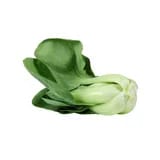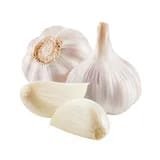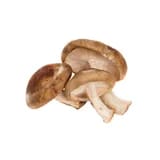Ingredients
Make sure you have...
Utensils
Stovetop, Pot (small), Frying pan
recipe

Step 1
Rinse & remove the end of the bok choy. Roughly chop it.



Step 2
Prepare the sauce. In a small bowl, combine : the miso paste, soy sauce, grated garlic & 1 tablespoon of hot water per person. Whisk until well-combined.

Step 3
In a warm pan, over medium heat, add the bok choy, sliced mushrooms & 40-50ml of water per serving. Give it a stir then cover the pan. Steam for 5-6 min until tender.

Step 4
Meanwhile, in a pot of boiling water, cook the noodles according to package instructions. Once cooked through, drain the noodles.
Step 5
Once lightly wilted, remove the veggies from the heat.

Step 6
In the pot, add : the drained noodles, steamed veggies & miso sauce. Toss until well-coated. Serve the noodles with a drizzle of chili oil, if you wish & enjoy !

Add your favorite protein to this dish! Marinated tofu or chicken would be the perfect addition :-)
- Hannah, Food Editor
Personal notes
Add your own flavor!
Nutrition facts
Average estimated amount for one serving
| Energy | 710 cal. |
| Fat | 10 g |
| Carbohydrates | 125 g |
| Protein | 23 g |
| Fiber | 21 g |
Values are based on an average estimate for one serving. All nutrition information presented on Jow is intended for informational purposes only. If you have any concerns or questions about your health, please consult with a health-care professional.
On average, one serving of the recipe "Miso Veggie Noodle Bowl" contains 710 Energy, 10 g of Fat, 125 g of Carbohydrates, 23 g of Protein, 21 g of Fiber.
Price per portion
| € | Nos recettes à -2 € par portion |
| €€ | Nos recettes entre 2 € et 4 € par portion |
| €€€ | Nos recettes à +4 € par portion |
Please note, the price above is dependent on your grocer and the available products in the grocery store you chose.
Scores


B Nutri-score
The Nutri-score is an indicator intended for understanding nutritional information. Recipes or products are classified from A to E according to their food composition to promote (fiber, proteins, fruits, vegetables, legumes, etc.) and foods to limit (energy, saturated fatty acids, sugars, salt, etc.).
B Green-score
The Green-score is an indicator representing the environmental impact of food products. The recipes or products are classified from A+ to F. It takes into account several factors on the pollution of air, water, oceans, soil, as well as the impacts on the biosphere. These impacts are studied throughout the product life cycle.
Retrieving reviews...



